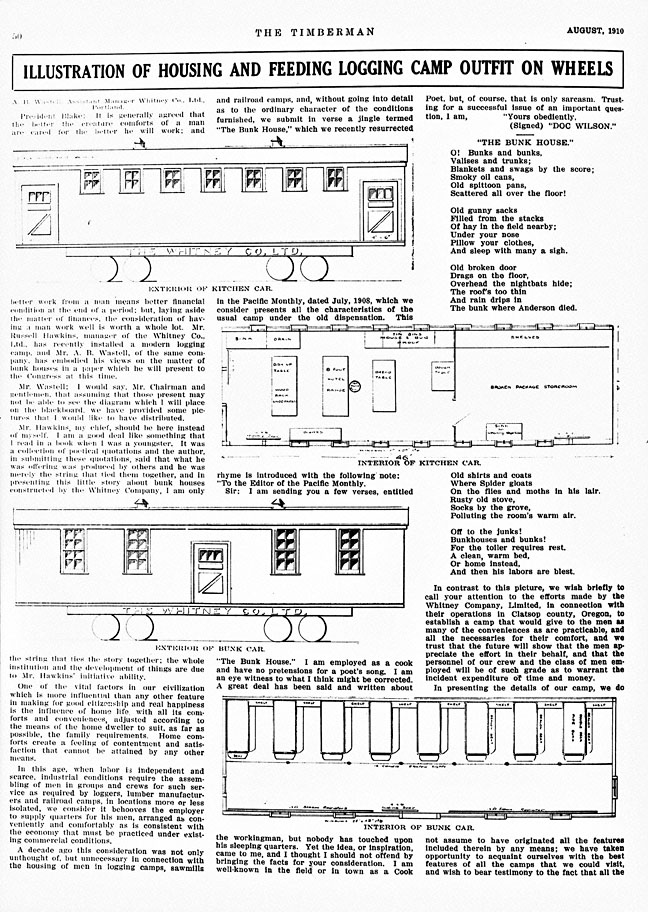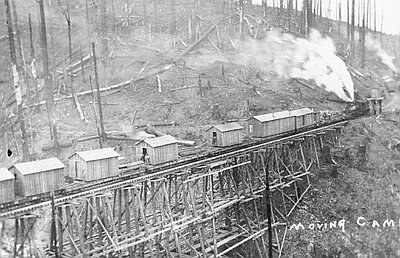- Catalog No. —
- The Timberman, August 1910
- Date —
- August 1910
- Era —
- 1881-1920 (Industrialization and Progressive Reform)
- Themes —
- Environment and Natural Resources, Trade, Business, Industry, and the Economy
- Credits —
- Oregon Historical Society
- Regions —
- Portland Metropolitan
- Author —
- A.B. Wastell, Assistant Manager, Whitney Company
Illustration of Housing & Feeding Lumber Camp Outfit on Wheels
This article about a movable logging camp that housed and fed timber workers appeared in the August 1910 issue of The Timberman, a monthly magazine for timber industry management that was published in Portland from 1899 until 1962.
Economic and social self interest played roles in improving the lot of the woods workers in the early twentieth century. The owners and managers of logging companies, disturbed by the growing influence of labor unions, began to pay heed to worker complaints that logging camp housing was dirty, cold, bug-ridden, and damp. This article presents the efforts of one logging company in Clatsop County, Oregon, to address the complaints and to “give to the men as many of the conveniences as are practicable, and all the necessaries for their comfort,” trusting that “the personnel of our crew and the class of men employed will be of such grade as to warrant the incident[al] expenditure of time and money.”
The Whitney Company bunk car, where the loggers slept, was exceedingly spartan. Each was 14 feet wide and 46 feet long, and contained eight double bunk beds: 16 men slept in 644 square feet, and each logger had one shelf for “trinkets—shaving mug, etc.” The cars were built of wood on the frames of old railroad flat cars, and each outfit (or camp) included five bunk cars. The outfit also included a cook car, dining room car, power and bath car, store car, and a commissary and office car. The power and bath car included a steam dynamo electric generator that supplied the outfit with electricity.
Railroad logging camps were tightly controlled by the company, and workers could only “escape” their corporate quarters from Saturday evening through Sunday—if they could afford the trip to “town.” Camps like these were a step in the transition from logging camps that were on site in the woods, to conditions where loggers lived in their own homes and commuted to work in the woods. An intermediate step, common from the 1920s through the 1940s, was the company town, where workers lived in a company-owned community but commuted to their woods work sites.
Written by Richard Engeman, © Oregon Historical Society, 2005

